Hola, estimados amigos lectores. Una vez más gracias a @mundo.autismo, por estas oportunidades de expresión y aprendizaje. Hoy voy a desarrollar un tema sobre una de las actividades que más me gustan para estimular la vía léxica o directa de lectura en niños autistas con dificultad lectora. Para ello, voy a tomarme la libertad de manejar este tema a través de la historia de J. D., niño autista de 06 años de edad, cursante del primer grado de educación primaria, con notables problemas a nivel de contenido y uso de lenguaje.
▶Hello, dear reader friends. Once again, thanks to @mundo.autismo, for these opportunities for expression and learning. Today I am going to develop a topic about one of the activities that I like the most to stimulate the lexical or direct reading route in autistic children with reading difficulties. To do so, I am going to take the liberty of handling this topic through the story of J. D., a 06-year-old autistic child, a first-grade primary school student, with notable problems at the level of content and use of language.
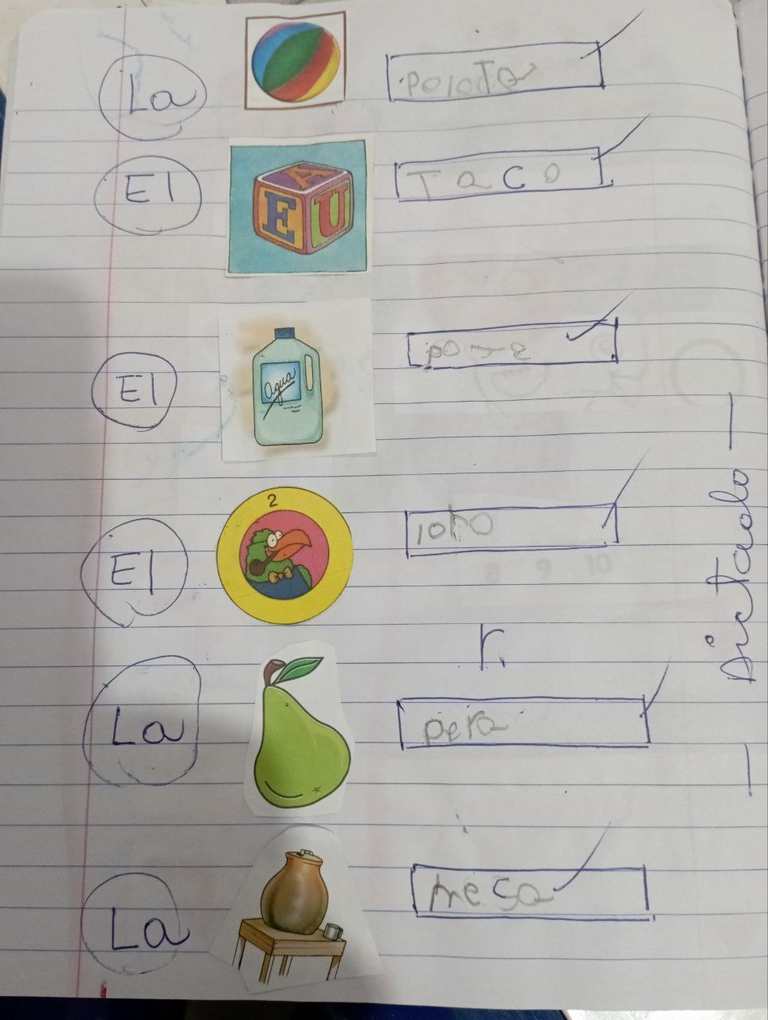

Actualmente, los autores de mayor relevancia en la investigación de los procesos lectores, están de acuerdo que para leer necesitamos poner en práctica dos vías o rutas de lectura, lo que se conceptualiza en la literatura especializada como modelos duales o modelos de doble ruta de acceso al léxico.
Básicamente, lo que proponen es que leemos a través de dos canales: uno indirecto o fonológico, que nos conecta con la decodificación grafema/fonema y otro directo o léxico que nos conecta con la ortografía y significado de las palabras que leemos. Ambas rutas deben coordinarse en forma dinámica, continua y eficiente en el acto lector.
▶Currently, the most relevant authors in the research of reading processes agree that in order to read we need to put into practice two reading paths or routes, which are conceptualized in the specialized literature as dual models or models of double access route to the lexicon.
Basically, what they propose is that we read through two channels: an indirect or phonological one, which connects us with the grapheme/phoneme decoding and another direct or lexical one that connects us with the spelling and meaning of the words we read. Both routes must be coordinated in a dynamic, continuous and efficient way in the reading act.
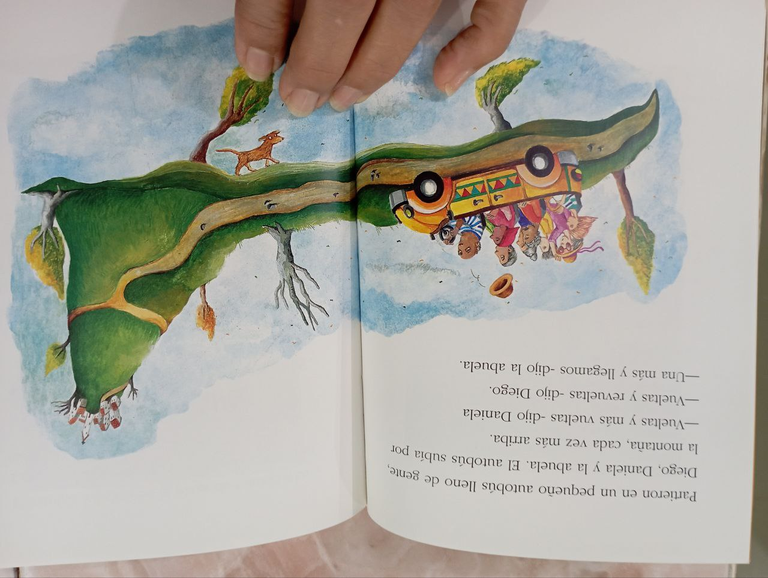

Bien, los niños que presentan limitaciones en el proceso lector, no pueden coordinar en forma eficiente ambas vías, lo que supone o una lectura donde es deficiente la relación grafema/fonema (fonología); o lo que supone una lectura lenta y entrecortada, porque hay presente una limitación en la vía léxica. De esta forma, las palabras, aun las que son conocidas, cortas y de uso frecuente, deben volver a decodificarse cada vez que el campo visual las detecta, porque no se quedan en el almacén de memoria visual.
En general, a nivel de teorías se percibe fácil; pero en realidad en el proceso lector se pueden presentar una indeterminada variedad de problemas a los cuales hay que hacer frente, toda vez que pretendamos rehabilitar las vías de lectura. Recordemos que cada niño es un universo de situaciones y de necesidades educativas diferentes. El perfil cognitivo de los niños autistas es heterogéneo, con tantas diferencias como se puedan imaginar.
▶Well, children who have limitations in the reading process cannot efficiently coordinate both pathways, which means either a reading where the grapheme/phoneme relationship (phonology) is deficient; or a slow and choppy reading, because there is a limitation in the lexical pathway. In this way, words, even those that are known, short and frequently used, must be decoded again each time the visual field detects them, because they do not remain in the visual memory store.
In general, at the level of theories it is perceived as easy; but in reality in the reading process an indeterminate variety of problems can arise that must be faced, whenever we intend to rehabilitate the reading pathways. Let us remember that each child is a universe of different situations and educational needs. The cognitive profile of autistic children is heterogeneous, with as many differences as you can imagine.
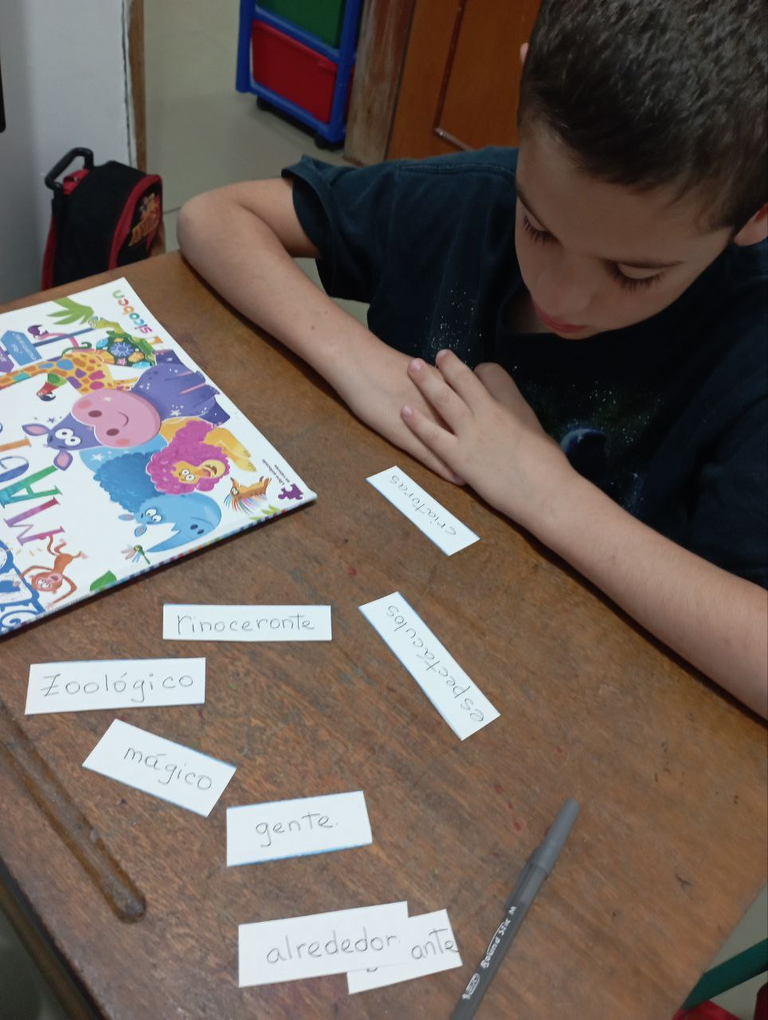

Partiendo de esta teoría voy a explicar la historia de J. D. Resultó que, a pesar de sus limitaciones a nivel de lenguaje, puede decodificar las palabras, con algunas interferencias en aquellos grafemas de sonidos similares; pero sabemos que esto puede pasar hasta en lectores competentes cuando se están iniciando en el aprendizaje de la lectura. En este sentido, le explicaba esta mañana a su madre, que hay que esperar un tiempo, algunos meses, continuar la estimulación de lectura, con apoyo en imágenes, estimulación auditiva, ejercicios de orientación espacial, y fundamentalmente actividades de corte fonético y fonológico para poder determinar si vamos al encuentro de un trastorno del aprendizaje o es un desajuste cualitativo por el estrés que genera este nuevo aprendizaje.
▶Based on this theory, I am going to explain J. D.'s story. It turned out that, despite his language limitations, he can decode words, with some interference in graphemes with similar sounds; but we know that this can happen even in competent readers when they are just beginning to learn to read. In this sense, I was explaining to his mother this morning that we have to wait a while, a few months, continue reading stimulation, with support from images, auditory stimulation, spatial orientation exercises, and fundamentally phonetic and phonological activities in order to determine if we are facing a learning disorder or if it is a qualitative imbalance due to the stress generated by this new learning.
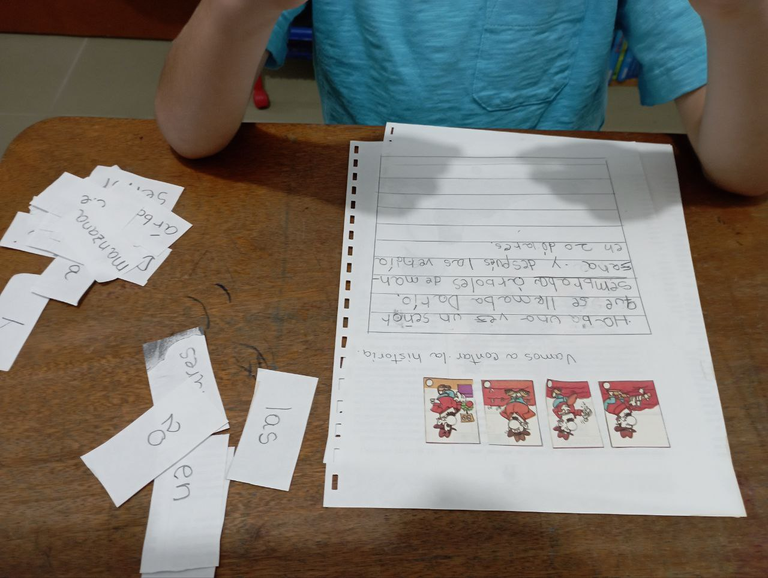

Por otra parte, para que la lectura no se apoye en forma desequilibrada en la vía fonológica, debemos asegurarnos de la estimulación alterna de vía directa. Sin duda, podría exponer varias actividades para tal fin; sin embargo, hay una que considero clave y que con el tiempo he mejorado, obteniendo resultados muy buenos en tiempos relativamente cortos. Les explico. Más allá de la estrategia en sí, comencé a aplicar una técnica donde juego con rutinas alternas y cíclicas que me permiten hacer una sincronía con el material (las palabras escritas) para fijarlas en la memoria y construir progresivamente un vocabulario visual que ayuda al niño a obtener una mayor velocidad de lectura, al reconocer las palabras sin la necesidad de tomarse el tiempo de volver a decodificarlas.
▶On the other hand, so that reading does not rely unbalancedly on the phonological pathway, we must ensure that there is alternate stimulation through the direct pathway. I could certainly describe various activities for this purpose; however, there is one that I consider key and that I have improved over time, obtaining very good results in relatively short times. Let me explain. Beyond the strategy itself, I started applying a technique where I play with alternating and cyclical routines that allow me to synchronize with the material (the written words) to fix them in memory and progressively build a visual vocabulary that helps the child to obtain a higher reading speed, by recognizing the words without the need to take the time to decode them again.
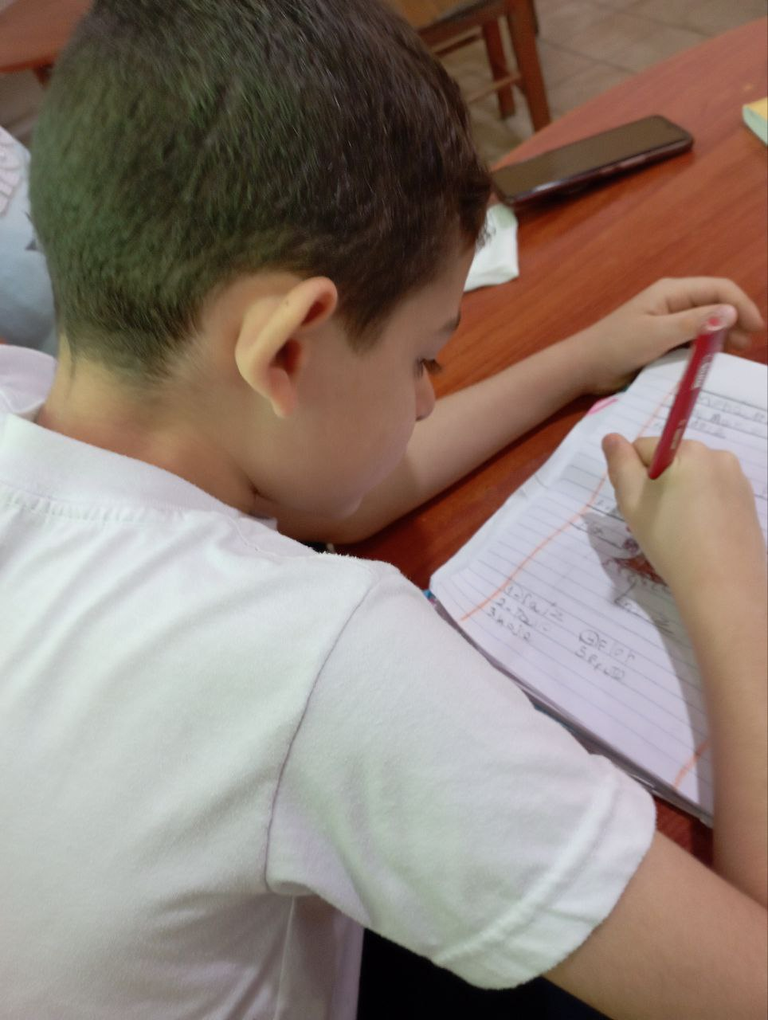

Las cajas de lecturas.
Cada una de las palabras que el niño logra decodificar sin errores fonológicos, debe pasar en forma de tarjeta a un caja. Cuando la caja tiene 10 palabras acumuladas, se deben separar 5 y 5. Las primeras deben someterse a decodificación con tiempos de exposición visual cada vez más cortos. Comienzo con 6 segundos y en cada vuelta de lectura, disminuyo 1. En consecuencia, deben darse 6 vueltas de lectura con las cinco palabras. Posteriormente, se realiza la misma rutina con el otro lote de 5 palabras. Finalmente, se reúnen las 10 palabras y se ejecuta la misma secuencia de lectura de 6 segundos. Todas las palabras que se lean sin errores y a golpe de vista, se pasan a la caja de lectura consolidada.
Las rutinas de aprendizaje de nuevas palabras por l vía léxica continua. Con la caja de lectura consolidada se pueden realizar actividades interdiarias, que pueden ser de lectura y/o escritura: colocarlas en pequeños textos, en oraciones, dictarlas e identificarlas.
▶The reading boxes.
Each word that the child manages to decode without phonological errors must be put into a box in the form of a card. When the box has 10 words accumulated, 5 and 5 must be separated. The first ones must be decoded with increasingly shorter visual exposure times. I start with 6 seconds and with each round of reading, I decrease by 1. Consequently, 6 rounds of reading must be done with the five words. Later, the same routine is done with the other batch of 5 words. Finally, the 10 words are put together and the same 6-second reading sequence is performed. All the words that are read without errors and at a glance are put into the consolidated reading box.
The routines for learning new words through lexical means continue. With the consolidated reading box, you can do inter-daily activities, which can be reading and/or writing: putting them in small texts, putting them in sentences, dictating them and identifying them.


Realizado en Power Point/Made in Power Point
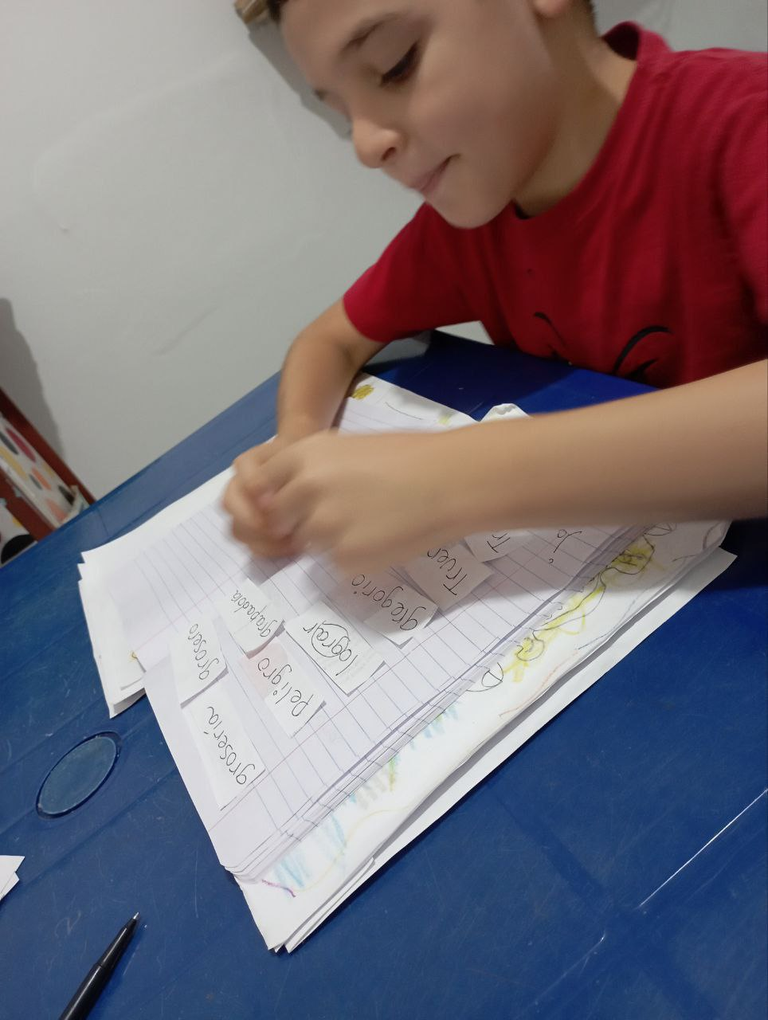
Si a estas alturas te estás realizando la pregunta, muy válida, de cuántas palabras de lectura consolidada hay que acumular para poder decir que se ha logrado el objetivo, debo responderte que cada niño es diferente, y por igual, cada proceso lector; sin embargo, si te animas a realizar este ejercicio te darás cuenta de que es impresionante cómo mejora la lectura y, dado un tiempo continuo realizando esta actividad, ya no hará falta hacerlo con la misma rigidez, sino que el proceso de reciclaje neuronal del cerebro se encarga de habilitar estas competencias y las hace automáticas, previo tiempo prudencial de exposición a los ejercicios.
▶If at this point you are asking yourself the very valid question of how many words of consolidated reading must be accumulated in order to say that the objective has been achieved, I must answer that each child is different, and so is each reading process; however, if you dare to do this exercise you will realize that it is impressive how reading improves and, given a continuous time doing this activity, it will no longer be necessary to do it with the same rigidity, but rather the neural recycling process of the brain is responsible for enabling these skills and makes them automatic, after a reasonable time of exposure to the exercises.

Importante:
Al tratar con problemas de lectura, debemos tener presente que durante el proceso inicial de rehabilitación, no sabemos si los mismos podrán ser totalmente superados (trastornos específicos del aprendizaje); o si por el contrario, se logra la total rehabilitación (dificultades no específicas de aprendizaje)
Pero independientemente, las actividades que acabo de describir van a mejorar el proceso de lectura, y con ello, el bienestar social y emocional del niño.
▶Important:
When dealing with reading problems, we must keep in mind that during the initial rehabilitation process, we do not know if they can be completely overcome (specific learning disorders); or if, on the contrary, full rehabilitation is achieved (non-specific learning difficulties)
But regardless, the activities, I have just, described will improve the reading process and thus the social and emotional well-being of the child.
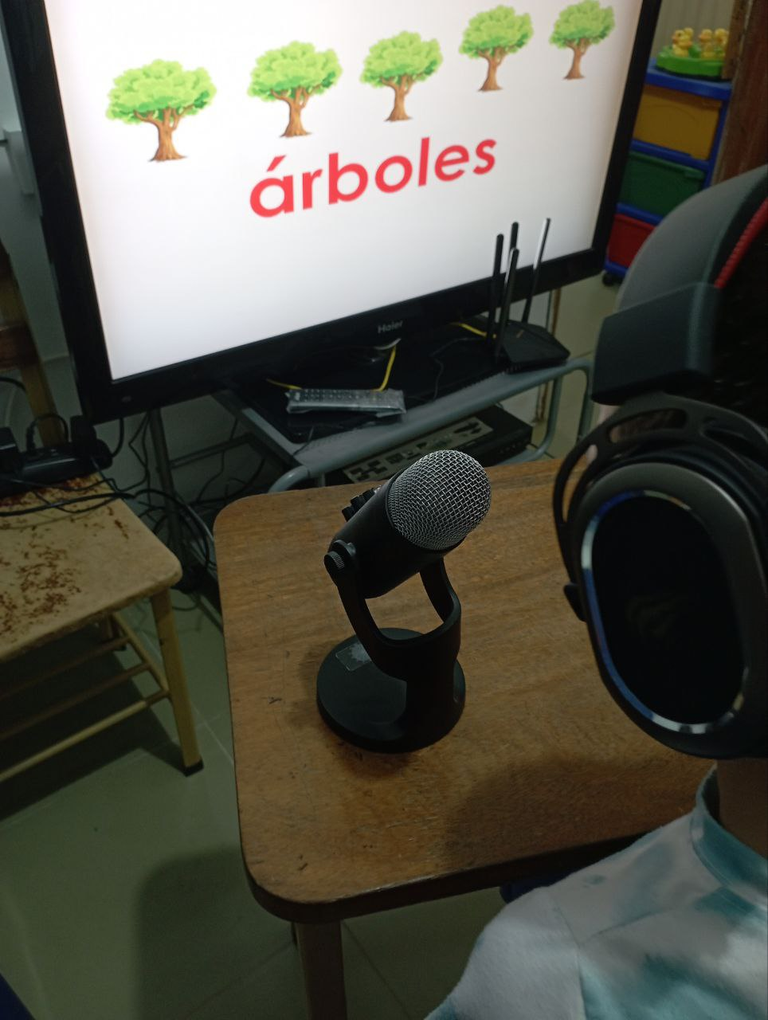

▶I hope you found this information interesting and, above all, useful. If you like, help us by sharing. Greetings and until the next opportunity, in this column on Psychopedagogical Perspectives..
Espero que esta información te haya parecido interesante y sobre todo útil. Si gustas, ayúdanos a compartir. Saludos y hasta una próxima oportunidaad, en esta columna sobre Perspectivas Psicopedagógicas..
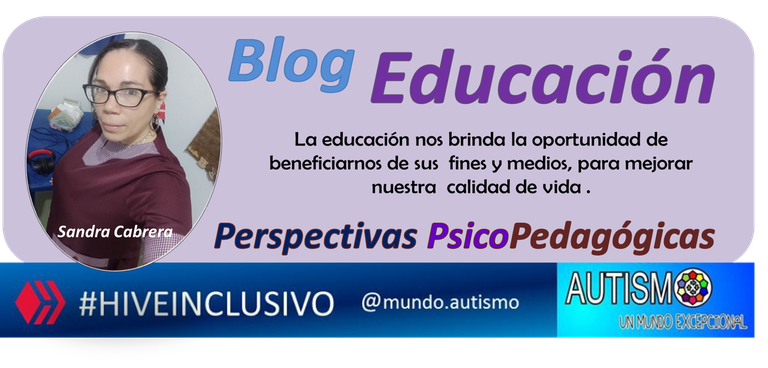

Soy Sandra Cabrera, licenciada en Dificultades para el Aprendizaje, con estudios de postgrado en Educación Especial Integral, Planificación Educativa y Literatura Infantil. Si te interesan los temas sobre educación especial, la discapacidad y las condiciones especiales del desarrollo, puedes contactarme a través de los números 04128032993 y 0412 8333334 y en:
El canal de Telegram, Trastornos del Aprendizaje.
En las redes sociales Instagram y Facebook1 y Facebook2. Sandra Cabrera Psicopedagoga.
En la cuenta de spreaker, @sandracabrerapodcast.
▶I am Sandra Cabrera, a graduate in Learning Disabilities, with postgraduate studies in Comprehensive Special Education, Educational Planning and Children's Literature. If you are interested in topics on special education, disabilities and special developmental conditions, you can contact me through the numbers 04128032993 and 0412 8333334 and at:
The Telegram channel, Learning Disorders.
On social networks Instagram and Facebook1 and Facebook2. Sandra Cabrera Psychopedagogue.
On the spreaker account, @sandracabrerapodcast.


Acompáñanos, suscribiéndote a Mundo Autismo/Join us by subscribing to Mundo Autismo
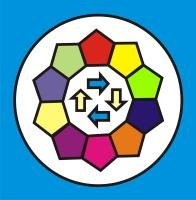
Y sé parte de un mundo excepcional, donde tendrás la oportunidad de informarte e interactuar./And be part of an exceptional world, where you will have the opportunity to learn and interact.
Nos encuentras en:/You can find us at:
X


Apoya a @aliento como Testigo./Support @aliento as a Witness

Fuentes de las imágenes:
Logo propiedad de la comunidad @mundo.autismo
Logo propiedad de la Comunidad @aliento
Logo X, editado en PowerPoint, Pixabay
Logo Facebook editado en PowerPoint, Pixabay
Image sources:
Logo owned by the @mundo.autismo community
Logo owned by the @aliento Community
X logo, edited in PowerPoint, Pixabay
Facebook logo edited in PowerPoint, Pixabay
La lectura es un mundo mágico lleno de aprendizajes desde mi experiencia, no tengo conocimientos acerca de lo que es la lectura en los autistas pero creo hay que tener mucha paciencia para que estas personas puedan entrar en el mundo lector.
Es por eso que dices que cuando ayudo a los niños a leer pienso que están ganado ese mundo mágico del que hablas.
Los niños autistas pueden disfrutar de la lectura como cualquier otro. Igualmente, mientras tengan más ejercicio de lectura comienzan a comprender las voces a través de las letras.
Gracias por leer y comentar.
Feliz domingoHola, @hector077
💬 Si te gusta nuestra labor, considera votar este comentario. 💬
💬 Si te gusta nuestra labor, considera votar este comentario. 💬
Muchas gracias.
Es una excelente herramienta para trabajar con los hermosos niños azules.
Con mucha paciencia y dedicación se logran grandes cosas.
Muchas gracias por compartir.
Gracias, @llovizna28
💬 Si te gusta nuestra labor, considera votar este comentario. 💬
Congratulations @sandracabrera! You have completed the following achievement on the Hive blockchain And have been rewarded with New badge(s)
Your next target is to reach 71000 upvotes.
You can view your badges on your board and compare yourself to others in the Ranking
If you no longer want to receive notifications, reply to this comment with the word
STOPCheck out our last posts:
@tipu curate 8
Que esperas para unirte a nuestro trail de curación y formar parte del "proyecto CAPYBARA TRAIL"
Upvoted 👌 (Mana: 0/75) Liquid rewards.